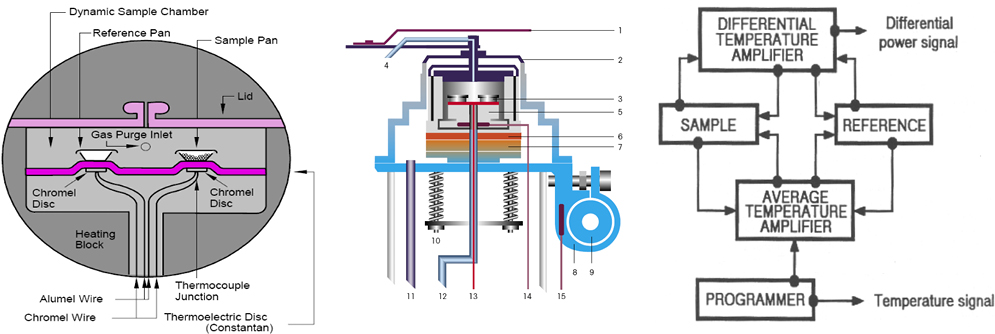Teldor excels at designing and producing standard/commodity cables, as well as customized, tailor-made cables. We make cables for a wide variety of applications and can manufacture both high and low volumes. Our cables meet a wide variety of standards and requirements insuring excellent performance and long service life. We are the “can-do” cable manufacturer. Read on to see how we do it!
What are the challenges involved in the process of characterizing insulation and jacketing materials for cable applications?
While standard cables fit many scenarios, sometimes customers need specific requirements. Here are some examples of frequently requested tailored cables:
- Cables with high flexibility and coupled with tensile strength. These are suited for cold impact resistance and repeated bending.
- Cables with high flexibility and a reduced minimum bend for tight installations with a reduced minimum bend radius.
- Cables that can be submerged inside potable water or wastewater pipes, and do not discharge compounds that are prohibited by regulatory bodies.
- Cables that are deployed above potable water or wastewater pipes, and are subject to varying conditions of extreme heat/cold temperatures and dryness/humidity. Designed for both above and below ground installations, the cable jacketing must be constructed from robust, long-lasting materials suitable for such installations.
- Cables that are flame-retardant and offer low-smoke, zero halogen-emission performance during fires. We also offer fire-resistant cables designed and tested according to various certification standards, such as the European CPR (Construction Products Regulation) and IEC 60331-23.
- Cables with able to withstand other requirements, such as cold bend, high tensile strength, high flexibility, whilst compliant with regulatory directives.
Any additional requirements and specifications require tweaking and customizing available cable designs.

<< Contact us to find out more >>
The Challenge with Custom Cables
Designing and producing customized cables or simply modifying a few parameters in standard cables involves lengthy R&D and engineering processes. It also requires specialized testing facilities, resulting in increased costs and time invested in the design, setup, manufacturing, testing, and compliance certification processes. The production phase involves lengthy machine setup times, fabrication of at least a few hundred meters of samples, and testing with specialized equipment that simulates long-term, in-the-field conditions.
Customers in need of specialized cables may face difficulties locating a producer able to design and manufacture them, especially if they only need relatively low volume. Many suppliers simply turn down projects to avoid the risk of expensive tests and potential failure. Here’s where Teldor comes in. Specialty manufacturing is a challenge requiring an agile and flexible production setup, which leaves little room for error. So how do we get it right? How do we do it?
In addition to our vast experience and expertise in material engineering, Teldor maintains an unparalleled portfolio of test equipment, and utilizes an impressive array of polymer characterization methodologies. These technologies enable us to efficiently characterize the makeup of raw materials that we receive from our suppliers. This shortens R&D cycles, reduces the number of setups and trials, thereby ultimately speeding up production time and accelerating time-to-market.

<< Contact us to find out more >>
The characterization process
Raw materials such as: finite cable, jacketing, and insulation, such as a piece from the overflow of material during the extrusion process, can all be characterized. With this process, we can understand the composition and functionality of a material from very small sample enables us to establish fuller picture of the composition and functionality of the materials.
For example, when selecting raw materials for cable production, we may receive samples from multiple suppliers that present identical datasheets. How do we verify which materials actually meet customer requirements and industry standards? How do we identify the small differences (salt & pepper) between various raw materials? To answer these questions, we complete the following:
- Identify the exact structure and exact chemical composition of the materials.
- Detect materials and properties that may adversely affect performance, product lifespan, and compliance with safety regulations.
- Identify and predict the materials’ behavior during the production process and cable lifespan.
Typically, suppliers send us either a few grams of material or a thermoplastic insulation or jacketing prototype that we can test to analyze its chemical and physical properties. We then run several analyses that enable us accurately characterize the polymer’s composition. Here are some examples of our analysis methods:
Specific Gravity: Also called Density, this test compares the raw material to the mass of an identical volume of a reference material, such as water or alcohol. Because different polymers have different densities, this test enables us to reliably identify the type of polymer and filler content, thus solving the first piece of the puzzle.
FTIR (Fourier Transform Infrared Spectroscopy): The FTIR test is a molecular analysis of the chemical bonds in the material. The resulting spectrum is equivalent to a fingerprint an “ID” that is scanned and stored in our extensive polymer library. The library is used to identify the best available match, percentage compatibility, and identify minor composition differences.
DSC (Differential Scanning Calorimetry): In DSC, materials are heated and cooled to determine melting and crystallization temperatures, which differ for each polymer. If more than one polymer fits the calorimetry results, the FTIR and DSC results can be combined to determine the polymer type.

TGA (Thermal Gravimetric Analysis): The TGA method involves increasing substance temperatures at different rates and measuring how the mass changes. This test gives us information regarding the decomposition of the material’s VOC content and filler content. If the material is a polymeric mixture, we can identify the various contents and their relative percentages in the mixture.

<< Contact us to find out more >>
By performing one or more of the above-mentioned tests, our materials engineers can characterize the chemical composition of the supplied materials, as well as their suitability for the intended application. If uncertainty remains, Teldor can perform an additional suite of tests for higher precision in the characterizing thermoplastic polymers.
Benefits to our customers
Teldor aims to supply our customers with the most economical, high-quality, specialized or standard cables that meet the requirements of all international standards and regulations. Our analysis process brings significant benefits such as:
- Accelerated design-to-production cycles and shortened time-to-market.
- Better performance, extended product lifespan, and excellent return on investment.
- Quality assurance and compliance with national and international regulations and customer-specific requirements.
- Efficient, smooth production processes that decrease waste and reduce our environmental footprint.

Teldor is a leading supplier of cables to the Defense, Industrial, Marine Oil and Gas, Mining, Telecom, AV, and Residential sectors.












